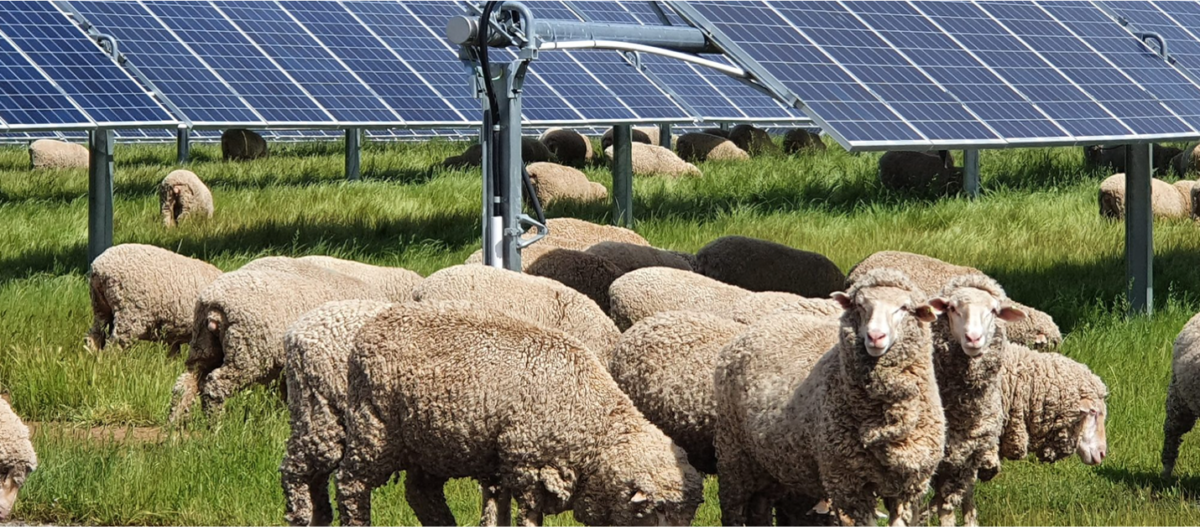There are increasing signs that negative sentiment towards wind, utility-scale solar, and electricity transmission projects in regional Australia is growing. National Party leader David Littleproud reported that he is seeing division in rural communities over renewable energy and grid expansion projects.
“It’s visceral out here at the moment. People want alternatives,” Littleproud said, in an interview with the Australian Financial Review. “There are families that don’t talk to each other.”
The National’s leader attended a community event near Orange in New South Wales (NSW) earlier this month and reported heated debate.
“It was pitting neighbour against neighbour,” said Littleproud. “The people who put the wind towers on their place get paid, but the neighbours have the transmission lines going over and get their property devalued.”
Littleproud and the Nationals appear to be grappling with what position to take on Australia’s energy transition and have proposed an expanded rooftop PV and energy storage program, “repurposing” funds set aside by the Labor government for large-scale projects.
Others appear to be “whipping up concern”, said Climate Change and Energy Minister Chris Bowen on 8 February. The Rally Against Reckless Renewables on 6 February saw genuine community concerns come together with a range of anti-science conspiracy theories. Former Nationals’ leader Barnaby Joyce and Littleproud both spoke at the event.
Enter agrivoltaics
Missing from the recent debate, it appears, is how solar and renewable energy projects can work in harmony with agriculture and rural communities.
Large-scale solar can compliment food production through agrivoltaics. Additionally standalone power systems (SPS) deliver reliable, clean power to rural proerties, while doing away with costly rural electricity networks, which can be the source of bushfires.
The Clean Energy Council’s 2023 agrivoltaics’ report argued that it presents a sustainable model preserves agricultural productivity, demonstrating a promising future for co-development in utility-scale solar projects and farming practices. It can capitalise on the synergies between solar energy generation and agricultural production.
The report said the integration of solar energy and agriculture, known as agrivoltaics or “agrisolar”, presents a promising avenue for enhancing land use efficiency. It has gained some traction in Australia, the CEC reported.
Solar grazing, in particular, has proven beneficial in Australia. Sheep grazing among solar module rows can help maintain vegetation growth and enhance land productivity. Operations and maintenance costs, for the solar project owner, can also be reduced – representing a mutually beneficial arrangement.
Solar farms offer additional advantages for agriculture, including improved animal welfare by providing shelter and reducing exposure to elements and predators.
Studies have shown that solar farms can create microclimates that are conducive to livestock health, evidenced by lower mortality rates among lambs and higher wool quality during adverse weather conditions.
“These solar grazing farms have the potential to reduce twin merino lamb average mortality rate from 20% in open paddock to 12% within the panel field,” says the CEC.
Research has also found that partial shade from solar panels can promote biodiversity, support bee populations, and improve conditions for certain horticultural practices by moderating temperatures, enhancing soil moisture, and facilitating plant growth under or around the panels.
Beyond ground-mounted solar systems, agrivoltaics encompasses a variety of configurations such as elevated PV panels that allow for cultivation underneath, solar greenhouses using semi-transparent modules, and floating PV systems suitable for aquaculture.
While these applications are currently more common on a smaller scale due to technical and financial considerations, The CEC says they represent potential growth areas for agrivoltaic innovation.
While conflicts between renewable energy development and rural communities may be growing, it must need not be inevitable.
For example, the Australian Energy Market Operator (AEMO) estimates that NSW “will need approximately 20,000 MW of large-scale solar generation to replace coal-fired power stations by 2050.”
These projections would only be an allocation of approximately 0.06% of its rural land to meet its large-scale solar generation targets by 2050.
This content is protected by copyright and may not be reused. If you want to cooperate with us and would like to reuse some of our content, please contact: editors@pv-magazine.com.










3 comments
By submitting this form you agree to pv magazine using your data for the purposes of publishing your comment.
Your personal data will only be disclosed or otherwise transmitted to third parties for the purposes of spam filtering or if this is necessary for technical maintenance of the website. Any other transfer to third parties will not take place unless this is justified on the basis of applicable data protection regulations or if pv magazine is legally obliged to do so.
You may revoke this consent at any time with effect for the future, in which case your personal data will be deleted immediately. Otherwise, your data will be deleted if pv magazine has processed your request or the purpose of data storage is fulfilled.
Further information on data privacy can be found in our Data Protection Policy.